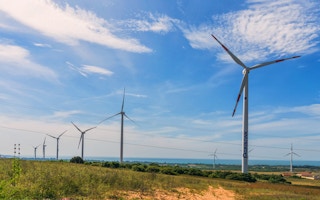Reports that the growth in carbon pollution paused last year should give heart to climate campaigners and clean energy investors around the world. The figures, from the International Energy Agency, no less, will come as a cold shower to those who still believe that burning fossil fuels is inextricably bound to economic growth.
For the first time in 40 years, global carbon dioxide emissions from the energy sector did not increase. During 2014, the global economy grew by 3 percent but emissions remained at 2013 levels. “This is a real surprise. We have never seen this before”, IEA chief economist Fatih Birol was reported as saying.
Whether a blip or a tipping point, it is an indication that renewable energy and energy efficiency are becoming serious game-changers.
If, despite the overwhelming evidence and the internationally agreed scientific consensus, you are someone who still believes climate change is contentious, take a moment, inhale deeply, and think about what a tip could mean for millions of people who are forced to breathe polluted air.
Consider the air quality in some Chinese cities where extreme air pollution means young children have never seen the stars. China’s carbon dioxide emissions have dropped for the first time since 2001, largely due to a drop in coal use by factories that have become the workshop of the world. Yet this hasn’t resulted in a slowdown of the country’s economy — something that my colleagues in Greenpeace East Asia have been saying for a while.
Or consider the air quality in Delhi which continues to rival that of Beijing’s. Let me here give a shout-out to the High Court of India that recently ruled that standing up against the polluting coal industry doesn’t constitute “anti-nationalism.” My colleague, Priya Pillai embodies the boldness of thousands of people across the globe who are proving their courage in the face of relentless polluters.
Does development really have to be founded on choking levels of smog and ever-rising carbon pollution or can it be achieved under the clear skies of a future based on renewable energy?
Aside from the progress being achieved in China, the IEA’s figures, due to be released in full in a report in June, show that OECD countries’ carbon dioxide emissions have fallen 4 percent over the past five years while their economies grew by nearly 7 percent.
In the European Union, renewable energy sources, led by wind and solar, last year proved central to meeting the additional power needs of its Member States. Renewables also met over half of those needs in the US, where 180 coal plants have become obsolete in the past four years. It is a testament to the thousands of forward-thinking engineers and business people who have harnessed the wind and the sun as serious options for generating power.
“
Renewable energy and energy efficiency are already making important inroads in stemming air pollution. The vast untapped potential for clean energy must not be lost on governments as they prepare to conclude a new climate agreement in Paris, this December.
I wonder how the IEA’s figures are going down in the boardrooms of fossil fuel companies, whose defenders continue to pump millions of dollars into anti-climate change PR campaigns and then scurry away when confronted with scrutiny.
Deep in their hearts they must know that pillaging the planet to power businesses and warm our homes is wrong and a zero-sum game. Why are they so sadly lacking in morality?
Surely they see that the writing is on the wall. It is manifested in the countless numbers of solar panels blossoming on rooftops and in communities across the world. It is being sung by the whirring of wind farms that are capturing increasing amounts of pollution-free energy. And it can be heard in the growing number of voices that are calling for a halt to climate change and for holding polluters accountable.
Renewable energy and energy efficiency are already making important inroads in stemming air pollution. The vast untapped potential for clean energy must not be lost on governments as they prepare to conclude a new climate agreement in Paris, this December. The question is whether governments will stand up for their citizens and set in stone ambitious targets that allow us all to live within the ‘safe’ limits of the biosphere.
I hold out the hope that the world will shortly turn a corner in combating global warming. At the very least, we have a firm example that curbing global emissions while economies expand is not a fanciful notion. Meanwhile, the onward march of clean energy is becoming unstoppable.
I believe that the goal of a world running entirely on renewably energy by the middle of this century is far from science fiction, and it is a goal that all of us — governments, corporations and citizens — should aim for.
Now, again, take a deep breath and consider who your government should be standing up for: you or the fossil fuel industries?
Kumi Naidoo is the Executive Director of Greenpeace International. This post was originally published on Greenpeace International’s Making Waves blog.











